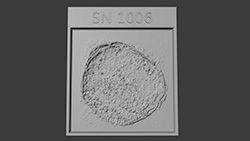CXC Home | Search | Help | Image Use Policy | Latest Images | Privacy | Accessibility | Glossary | Q&A
1
X-ray & Infrared Images of SN 1006Credit: X-ray: NASA/CXC/SAO (Chandra); NASA/MSFC/Nanjing Univ./P. Zhou et al. (IXPE); IR: NASA/JPL/CalTech/Spitzer; Image Processing: NASA/CXC/SAO/J.Schmidt
This image shows SN 1006 from two of NASA’s current X-ray telescopes, the Chandra X-ray Observatory and Imaging X-ray Polarimetry Explorer (IXPE). In the full image of SN 1006, red, green, and blue show low-, medium-, and high-energy detected by Chandra. The IXPE data, which measure the polarization of the X-ray light, have been added in the upper left corner of the remnant in purple. The lines in that corner represent the direction of the magnetic field. The new X-ray results expand scientists’ understanding of the relationship between magnetic fields and the flow of high-energy particles from exploding stars. Infrared data from the Spitzer Space Telescope showcase the stars in the field of view.
2
3D Printable Files: SN 1006 (Composite Image)(3D Print Credit: NASA/CXC/A. Jubett, using software by Tactile Universe/N. Bonne & C. Krawczyk & Blender)
This tactile plate is a physical relief map based on the intensity of X-ray data of the supernova remnant SN 1006, showing debris from an exploded star that resembles a mottled ball of churning fire. The turbulent supernova remnant appears to be encircled by a thin ring that is most prominent at our lower right and upper left.
At the upper lefthand corner of the plate, the outer ring of the supernova remnant stands out. This ring is part of the supernova’s expanding blast wave, which has been observed in X-ray light by the Chandra X-ray Observatory.
At the upper lefthand corner of the plate, the outer ring of the supernova remnant stands out. This ring is part of the supernova’s expanding blast wave, which has been observed in X-ray light by the Chandra X-ray Observatory.
Return to: IXPE and Chandra Untangle Theories Surrounding Historic Supernova Remnant (October 26, 2023)








